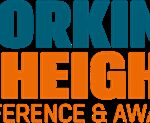1. Introduction to the JLG Lending Model
The Joint Liability Group (JLG) lending model is a financial approach designed to provide credit access to individuals who may not have traditional collateral or a strong credit history. This model is particularly beneficial for those engaged in small businesses, farming, and other income-generating activities. Under this system, a small group of individuals, typically consisting of five members, comes together to form a JLG, where each member provides a mutual guarantee for the loans taken by the group. This structure significantly reduces the risk for lenders while promoting financial inclusion among underserved communities.
2. How the JLG Lending Model Works
The JLG lending model functions based on principles of shared responsibility and collective guarantee. Here’s how it typically operates:
-
Formation of a Joint Liability Group
-
A group of individuals (usually 4 to 10 members, with an ideal size of five) voluntarily forms a JLG.
-
The members often belong to the same economic background, such as small farmers, artisans, or micro-entrepreneurs.
-
They should trust each other, as they will be collectively responsible for loan repayment.
-
-
Loan Application Process
-
The group approaches a financial institution, such as a bank or microfinance organization, to request a loan.
-
Unlike traditional loans that require collateral, JLG loans are unsecured, meaning no physical assets need to be pledged.
-
Instead, the group members provide a mutual guarantee, ensuring that if one member fails to repay, the others will cover the outstanding amount.
-
-
Loan Disbursement
-
Based on the creditworthiness of the group, loans are either given to individuals within the group or to the group as a whole.
-
In the individual lending model, each member receives a separate loan but remains jointly responsible for ensuring repayment.
-
In the group lending model, the entire group takes a collective loan and distributes it among the members as needed.
-
-
Repayment and Monitoring
-
Loan repayment is structured in small, manageable installments, making it easier for borrowers to meet their obligations.
-
If any member is unable to make a payment, the other members step in to cover the shortfall, ensuring that the group’s credit standing remains intact.
-
Financial institutions monitor the repayment behavior of the group, and those with a good repayment record may qualify for larger loans in the future.
-
3. Key Features of the JLG Lending Model
The JLG lending model stands out due to its unique features, which make it an effective tool for financial inclusion:
-
Collateral-Free Loans: Borrowers do not need to provide physical assets as security, making it easier for low-income individuals to access credit.
-
Mutual Guarantee Mechanism: Each group member is responsible for ensuring that all loans within the group are repaid, reducing default risk.
-
Flexible Loan Usage: Loans are typically used for income-generating activities such as farming, small-scale manufacturing, retail businesses, or livestock management.
-
Simplified Loan Approval Process: The emphasis is on group trust rather than extensive paperwork or formal credit history.
-
Financial Discipline and Credit Building: Members develop better financial habits, and successful repayment history helps them become eligible for larger loans in the future.
4. Advantages of the JLG Lending Model
The JLG model offers multiple benefits, both for borrowers and financial institutions:
For Borrowers
-
Increased Access to Credit: Individuals who may not qualify for traditional loans can still obtain financing through a JLG.
-
Lower Interest Rates: Since the risk is shared among the group, interest rates are often lower compared to informal lending sources.
-
Empowerment of Small Entrepreneurs: Enables small business owners to expand operations and improve income levels.
-
Encourages Teamwork and Community Support: Members help and support each other in business growth and financial management.
For Financial Institutions
-
Reduced Loan Default Risk: The mutual guarantee system lowers the likelihood of defaults.
-
Operational Efficiency: Lending to groups simplifies loan processing and management compared to handling individual applications.
-
Market Expansion: Enables banks and microfinance institutions to reach rural and underserved markets more effectively.
5. Applications of the JLG Lending Model
The JLG model is widely used in various sectors, primarily focusing on individuals engaged in income-generating activities. Some key areas where it is commonly applied include:
-
Agriculture: Farmers form JLGs to secure loans for seeds, fertilizers, irrigation systems, and equipment purchases.
-
Small Businesses and Microenterprises: Retailers, artisans, and self-employed individuals use JLG loans to expand operations and purchase inventory.
-
Women’s Empowerment Initiatives: Many microfinance institutions focus on forming JLGs among women entrepreneurs, enabling them to start small-scale businesses or home-based enterprises.
-
Livestock and Dairy Farming: Loans help in purchasing livestock, poultry, and necessary feed to enhance productivity.
6. Challenges and Limitations of the JLG Lending Model
Despite its benefits, the JLG model also has certain limitations:
-
Risk of Overburdening Members: If one member defaults, the financial burden falls on the rest of the group, which can create strain.
-
Potential Group Conflicts: Disagreements over repayment responsibilities or loan distribution may arise within the group.
-
Limited Loan Size: JLG loans are generally small, which may not be sufficient for larger business expansion needs.
-
Dependency on Group Trust: The success of the model heavily relies on mutual trust and cooperation among members.
The Joint Liability Group (JLG) lending model is a powerful financial tool that promotes financial inclusion, entrepreneurship, and economic growth. By enabling groups of individuals to access credit through a mutual guarantee system, JLGs help those who might otherwise struggle to secure loans. The model is particularly effective for small farmers, micro-business owners, and women entrepreneurs, offering them a pathway to financial independence and business success.
While there are challenges, such as default risks and group conflicts, the benefits of increased credit access, financial empowerment, and community support make JLGs an essential part of inclusive banking and microfinance strategies worldwide. With continuous refinements and support from financial institutions and governments, the JLG lending model is set to play a crucial role in poverty alleviation and economic development in the years to come.




